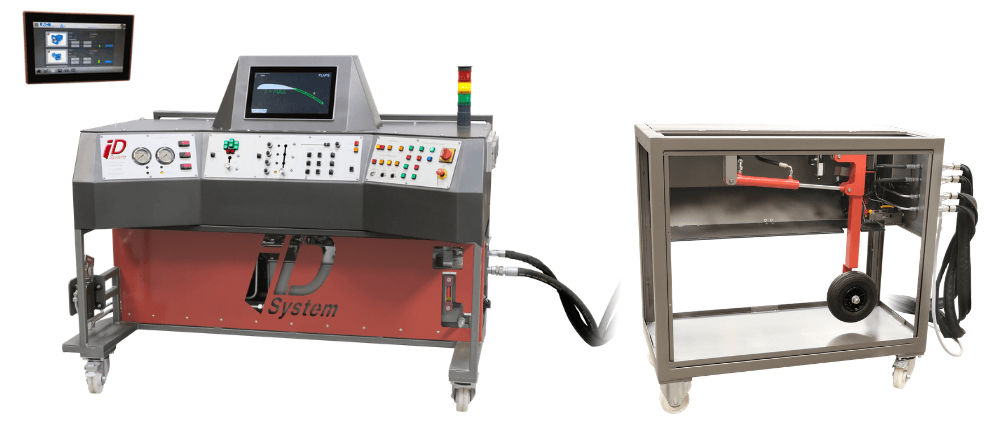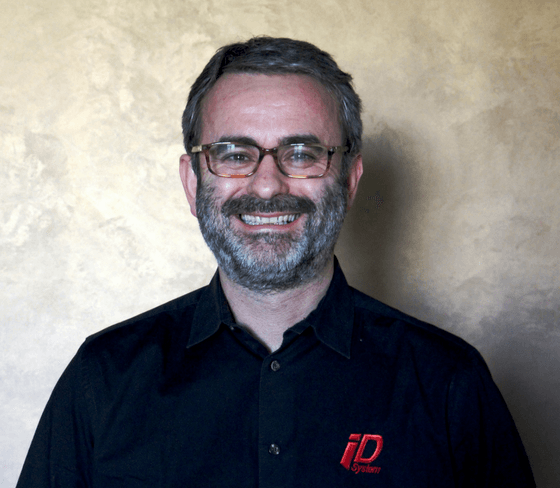Profile of Yoann Gac: from aircraft maintenance to the design of hydraulic training benches
Nothing predestined Yoann Gac, an aviation and aeronautics enthusiast, to become an instructor.
He left school in first year to join the French Air Force, working in an environment he particularly liked.
He entered the EETAA in Saintes (École d’Enseignement Technique de l’Armée de l’Air) and then theÉcole de Formation des Sous-Officiers de l’Armée de l’Air in Rochefort, where he learned the trade of aircraft mechanic.
A dream come true for a man who grew up contemplating airplanes.

It was then that he learned the aircraft mechanic’s trade, and 6 years later the flight mechanic’s trade, with a competitive examination and training in hand. This enabled him to work on airplanes and helicopters.
For a change, he flew to new destinations overseas to apply his technical skills to exciting and intense projects.
He spent 20 years on various missions around the world:
- Runway mechanic: AWACS radar aircraft.
- Super Puma helicopter crew member at Villacoublay: Transporting the President of the Republic and the government.
- Puma helicopter crew member: Troop support and rescue in New Caledonia.
- Puma helicopter crew member: missions to protect the Guiana Space Center, combat illegal gold mining and save lives in French Guiana.
But Yoann wanted to settle down on dry land and enjoy his family more.
He then embarked on an intensive search for a new career in training, and took advantage of the Paris Air Show in June 2013 to meet professionals in this sector. “AEROCAMPUS Aquitaine was thrilled with his career path, and Yoann joined the teaching staff at the Lycée Flora Tristan attached to the Aérocampus site at Latresne in September.

He passed the CAPLP (Concours d’Aptitude au Professorat en Lycée Professionnel option maintenance des véhicules) and after a year at ESPE (École Supérieure de Professorat et de l’Éducation), he obtained a Master 2 MEEF (Métier de l’Éducation de l’Enseignement et de la Formation) in engineering sciences.
Since 2013, he has been enjoying this new adventure and taking pleasure in training and passing on his skills to young people. It’s an exciting challenge that he faces every day.
His atypical career is an example for all the students he trains in aircraft maintenance at the AEROCAMPUS Aquitaine site in Latresne, young people from 2nd to BTS level, and sometimes even training for adults.
Today, he focuses his learning methodology on practice and offers a lot of hands-on work. There’s nothing like seeing how aeronautical hydraulics work in real-life conditions. This allows learners to experience the realities of the job.
He was faced with the challenge of enabling this learning process to take place on aircraft using highly toxic, high-pressure hydraulic fluids, while ensuring the safety of learners and instructors by maintaining the aircraft in operational condition.


Starting up the aircraft maintenance training bench with Yoann Gac
From this problem arose a need expressed by Yoann Gac, who looked for a company in France that could meet his expectations. After much research, he met Mickaël LANGLAIS, Industrial Director of ID System Didactic, which has a proven track record in the manufacture of didactic equipment.
These two professionals from different backgrounds were able to work in synergy and pool their skills to bring this project to fruition: the development and design of a hydraulic test bench dedicated to aeronautics.
Yoann GAC has worked in partnership with ID System Didactic for 3 years to develop and design teaching materials which takes up the specifics of the aeronautical field (a control panel based on aircraft cockpit codes, a hydraulic power unit and dedicated operating parts such as landing gear and flaps).
Students practice on a specially-designed aeronautical trainer, using industrial-technology hydraulic components from leading brands, which have the advantage of being much less expensive than aeronautical equipment. They learn how to maintain aircraft/helicopter hydraulic systems in a much more fun and, above all, safer way.
In concrete terms, the students’ objectives are to :
- Secure a hydraulic circuit using the maintenance documentation associated with the operation.
- Prepare a job, install and remove sub-assemblies, adjust a sub-assembly, carry out tests related to the job.
- Troubleshoot hydraulic and electrical faults while following aeronautical maintenance safety procedures.

Cockpit and landing gear operating parts
The aeronautical hydraulic bench enables learners toin the best possible conditions the technical specificities and safety constraints of the aeronautical hydraulics sector with redundant learner protection solutions (plug-in hydraulic hoses fitted with jet-breaking sheaths and anti-whip cables, biodegradable and non-toxic oil unlike the fluids used in aeronautics, etc.)..
If you’re interested, you can find out more about the pedagogical purpose of this equipment here.

Written by Mickaël Langlais
As Business Manager at ID System, I help training professionals define their didactic equipment needs. I keep a close eye on technological developments to design tomorrow’s teaching materials. Let’s be proactive in an evolving market.
Why use an in-house design department to design a trainer?
timeBelow the didactic equipment lies a titanic feat of engineering. It's hard to imagine all the work and energy that goes into designing machines that will be used by learners and trainers/teachers. Every day, these engineers come up with new concepts or improve...
The benefits of IO-Link technology for your teaching equipment
Start-up of an educational hydraulic test bench in an unusual setting
We are used to carrying out start-ups all over France and abroad, and we work in a different environmental context each time. But this time it was particularly rewarding to work close to a hangar housing military aircraft for educational purposes. Life-size military...


